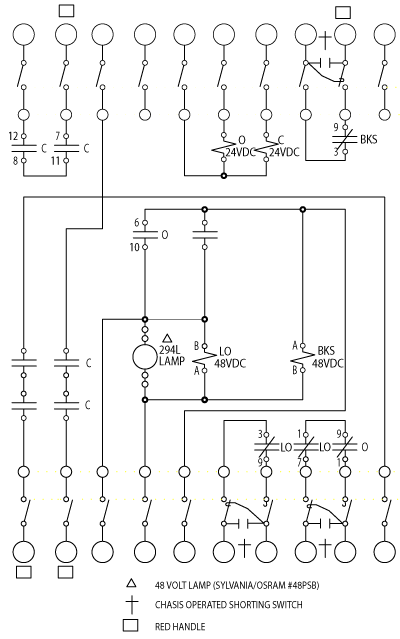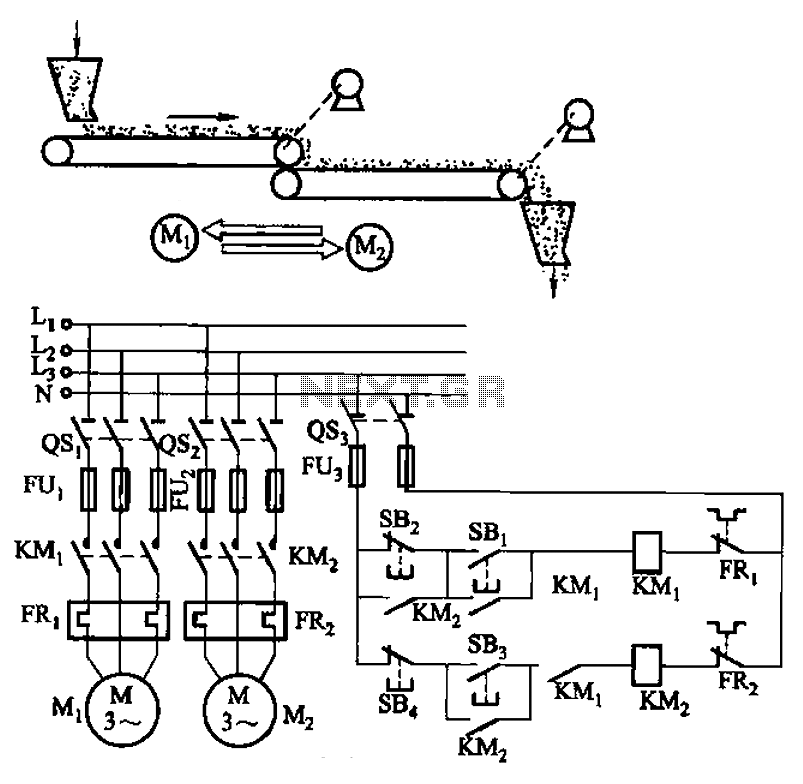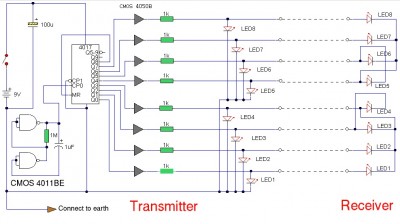
infrared remote control tester

While developing an infrared (IR) extender circuit, a method was needed to measure the relative intensities of various infrared light sources. This circuit is the outcome of that research. A photodiode, specifically the SFH2030, is utilized as the infrared sensor. A MOSFET operational amplifier, CA3140, is employed in differential mode to amplify the current pulses generated by the photodiode. An ordinary colored LED, LED1, illuminates when IR radiation is detected. The output from the operational amplifier at pin 6 can be connected to a multimeter set to read DC volts, allowing for the comparison of infrared remote control strengths based on the meter reading; a higher reading indicates a stronger infrared light. The sensor was aimed at different remote controls from approximately one meter away during testing. For every microamp of current passing through the photodiode, approximately one volt is produced at the output. It is important to note that a 741 or LF351 operational amplifier will not function in this circuit. Although a 12-volt power supply is used, a 9-volt battery can also be employed.
The infrared extender circuit is designed to measure and compare the intensity of infrared light emitted from various remote controls. The core component, the SFH2030 photodiode, is sensitive to infrared wavelengths, making it suitable for detecting signals from remote control devices. When infrared light strikes the photodiode, it generates a small photocurrent proportional to the intensity of the light.
The CA3140 operational amplifier is configured in a differential mode to amplify the weak signals received from the photodiode. This configuration enhances the sensitivity of the circuit, allowing for accurate measurements of varying infrared light intensities. The output from the op-amp is then fed to a multimeter, which displays the voltage corresponding to the intensity of the infrared light. The relationship between the photocurrent and output voltage is linear, with approximately one volt produced for every microamp of current detected.
LED1 serves as a visual indicator, illuminating when infrared radiation is present, providing immediate feedback on the detection of IR signals. The choice of power supply is flexible; while a 12-volt power supply is recommended for optimal performance, a 9-volt battery can also be utilized, making the circuit versatile for different applications.
This circuit is particularly useful for testing remote controls, allowing users to determine the strength of the IR signals they emit. By aiming various remote controls at the photodiode from a fixed distance, users can effectively compare their performance based on the voltage readings from the multimeter. The circuit's design ensures that it is straightforward to assemble and use, making it an accessible tool for those interested in infrared technology and remote control diagnostics.As I was developing my IR Extender Circuit, I needed to find a way of measuring the relative intensities of different Infra red light sources. This circuit is the result of my research. I have used a photodiode, SFH2030 as an infra red sensor. A MOSFET opamp, CA3140 is used in the differential mode to amplify the pulses of current from the photodi
ode. LED1 is an ordinary coloured led which will light when IR radiation is being received. The output of the opamp, pin 6 may be connected to a multimeter set to read DC volts. Infra red remote control strengths can be compared by the meter reading, the higher the reading, the stronger the infra red light. I aimed different remote control at the sensor from about 1 meter away when comparing results. For every microamp of current through the photodiode, about 1 volt is produced at the output. A 741 or LF351 will not work in this circuit. Although I have used a 12 volt power supply, a 9 volt battery will also work here. 🔗 External reference
The infrared extender circuit is designed to measure and compare the intensity of infrared light emitted from various remote controls. The core component, the SFH2030 photodiode, is sensitive to infrared wavelengths, making it suitable for detecting signals from remote control devices. When infrared light strikes the photodiode, it generates a small photocurrent proportional to the intensity of the light.
The CA3140 operational amplifier is configured in a differential mode to amplify the weak signals received from the photodiode. This configuration enhances the sensitivity of the circuit, allowing for accurate measurements of varying infrared light intensities. The output from the op-amp is then fed to a multimeter, which displays the voltage corresponding to the intensity of the infrared light. The relationship between the photocurrent and output voltage is linear, with approximately one volt produced for every microamp of current detected.
LED1 serves as a visual indicator, illuminating when infrared radiation is present, providing immediate feedback on the detection of IR signals. The choice of power supply is flexible; while a 12-volt power supply is recommended for optimal performance, a 9-volt battery can also be utilized, making the circuit versatile for different applications.
This circuit is particularly useful for testing remote controls, allowing users to determine the strength of the IR signals they emit. By aiming various remote controls at the photodiode from a fixed distance, users can effectively compare their performance based on the voltage readings from the multimeter. The circuit's design ensures that it is straightforward to assemble and use, making it an accessible tool for those interested in infrared technology and remote control diagnostics.As I was developing my IR Extender Circuit, I needed to find a way of measuring the relative intensities of different Infra red light sources. This circuit is the result of my research. I have used a photodiode, SFH2030 as an infra red sensor. A MOSFET opamp, CA3140 is used in the differential mode to amplify the pulses of current from the photodi
ode. LED1 is an ordinary coloured led which will light when IR radiation is being received. The output of the opamp, pin 6 may be connected to a multimeter set to read DC volts. Infra red remote control strengths can be compared by the meter reading, the higher the reading, the stronger the infra red light. I aimed different remote control at the sensor from about 1 meter away when comparing results. For every microamp of current through the photodiode, about 1 volt is produced at the output. A 741 or LF351 will not work in this circuit. Although I have used a 12 volt power supply, a 9 volt battery will also work here. 🔗 External reference





